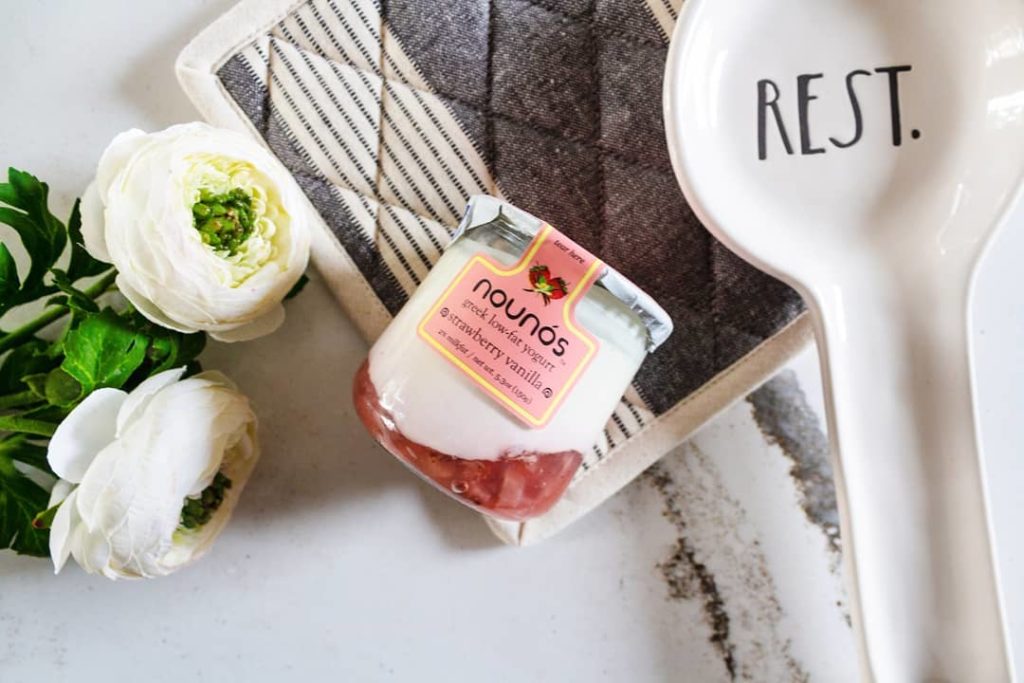
By Are Traasdahl, founder and CEO, Crisp
For nearly a year, shopping for groceries and household items has felt a bit like the wild west. Whether by choice or by force, 75% of consumers tried a new store, a different way of shopping or a new brand, according to McKinsey.
And, many consumers were happy with their decision. For retail and CPG brands that spent years – or decades – building brand loyalty, the ability to lose it in mere months has been a shock. But, for most organizations, there’s both an upside and a downside to COVID switching behavior.
The upside is that you may have attracted new loyal customers if you had consumers switching to your brand. Of course, the opposite is also true. If your brand was out-of-stock, hard to find or otherwise missing you may have lost customers for good.
Consumer behavior isn’t anticipated to go back to “normal.” So, those on the losing end of a switch shouldn’t expect shoppers to come back — at least not without some serious convincing.
Before you admit defeat, there are ways to recover lost customers, and maybe even gain new ones in the process. But you’ll need to tap into data and analytics, using new AI-driven tools that can dig deep into large pools of data and provide direction for marketing, supply chain and business process optimization.
With that in mind, let’s look at examples and impacts of switching behavior during COVID and steps to start down the path to recovery.
Switch #1: Grocer preference
Approximately 20% of shoppers left their primary grocery store and 37% of those expect to remain loyal to their new store. Constant out-of-stocks, poor technology/ecommerce, and closer-to-home location were key switching drivers. Since mid 2020, consumers have intentionally reduced both the number of stores shopped and the number of trips. Now trending: “one-stop shops” with larger baskets that include a broader variety of categories purchased in a single trip.
But this behavior isn’t set in stone. With COVID still a concern, shoppers want a safe, clean, shopping environment; if they don’t feel comfortable in one store, they are likely to switch again.
Switch #2: Online versus offline
Online shopping exploded in the wake of COVID-19. In mid 2020, household penetration reached 35%, more than double pre-COVID levels. Number of shoppers, order frequency, number of orders and average spend per order continued to grow at a record-breaking pace. For some, online grocery shopping will be a permanent change. For others, the poor experiences they had with early online ordering, availability, curbside pickup or quality has already driven them back to offline channels.
The extended pandemic means that shoppers are still experimenting, giving grocers and brands a chance to regain or grow loyalty with an uncertain public.
Switch #3: Brand preference
Out-of-stocks, changing assortments and online shopping encouraged more than half (55%) of shoppers to consider different brands. Availability often trumped brand; 65% of consumers tried another brand because their preferred brand was unavailable and they were unwilling to go to another store as they might have before. Trying new stores and shopping online also exposed consumers to a broader variety of brands. One cumulative positive effect: massive trial opportunities for second and third tier CPG brands, as well as private label store brands.
But there’s bad news for traditional CPG brands: repeat purchase of alternative brands is high, even after previously preferred brands returned to shelves. In fact, 67% say their experience with a new brand was better than or equal to their former favorite. One positive: only 30% say they have continued to buy the alternative brand exclusively, so there’s still hope to recover some previous loyalists.
Building the path to recovery relies on better data
For retailers and brands, negative switching behavior has already started chipping away at long-term loyalty, sales and revenue. But for those willing to fight for their customers, tapping into data and using informed insights to update go-to-market strategies is a good way to start down the path to recovery.
You should turn your attention to four areas of the business, allowing you to reset business goals and apply new tools and technology to move quickly.
Consumer profiles and segmentation
Switching behavior has rendered most pre-COVID consumer profiles, segments, and marketing programs unreliable. Unfortunately, behaviors aren’t anticipated to even out anytime soon, but that’s no reason to let your merchandising, category management, or marketing programs go dormant.
Start by deploying continuous monitoring of robust external, internal and shopper-specific data at a granular level. This, coupled with faster decision cycles, will be critical to meeting consumers where they are, and anticipating where they will go next.
You’ll want to look at wider data sources such as consumer sentiment, geophysical tracking, cellphone data, social listening, text mining of social networks, voice, video, and reviews, primary brand/category-specific research, online search, digital engagement, demographics, psychographics, loyalty and point-of-sale data, traffic and transactions, basket size and composition, cross-shopping patterns and rates, walk-rates and online/instore shopping mix.
In addition, factors such as consumer price index, unemployment rates, virus testing/infection/death rates, and business/school re-opening plans as well as individuals’ concern about financial security, health, and overall state of mind may need to be layered in.
Finding usable insights in these huge volumes of data can be overseen by the data science team in conjunction with departments, but this is the time to tap into the power of artificial intelligence and machine learning.
Automated and AI-driven analytics can grab data from all sources and interpret it to (re)define consumer segments and identify the most valuable consumers at the brand, item, channel, or store level. With it, you can identify product loyalists/switchers, capture substitution patterns, and decipher key drivers and patterns of purchase and consumption behavior. Because AI and machine learning-enabled systems continuously learn and adapt, they can flag subtle shifts in behavior that would be missed by human analysis, a factor that is particularly important given today’s volatility and complexity.

Assortment
Since March 2020 there’s been a 10-point increase in consumers seeking “something interesting” to eat at home. The monotony and a continued lack of variety is starting to sink in.
Your second move should be to focus on consumer-centric assortment optimization. The goal: identify the right combination of products, both branded and private label, to optimize shopper satisfaction, loyalty, and profitable growth at the store cluster level for both instore and online shopping.
Curating assortment accurately requires understanding consumer segments, the relationship shoppers have with each defined category and the behaviors they exhibit when shopping.
Possible inputs to evaluate include current product loyalty scores, primary shopper penetration, consumer decision trees, transaction data, loyalty data, identification of store-loyal and high-volume shoppers, identification of (previously) exclusive brand buyers and their trial and repeat of (previously) unplanned purchases, product-specific “walk rates” (percentage of shoppers who will wait to buy or leave the store if their preferred item is unavailable), cross-shopping patterns and product availability at competitors, switching analysis, substitution behaviors, and item-specific transferable demand (what item, if any, a shopper will accept as a substitute).
Defining the value and implications of each assortment option is essential, but more than the human mind and spreadsheets can handle. Best-in-class optimization using AI-powered analytics takes all the data, behavioral factors, and complex product interrelationships into account to make quantified recommendations with accuracy and speed, down to the store or store cluster level.
With evolving customer behaviors, speed is an important factor in assortment optimization. AI/ML systems can continuously monitor assortment performance and assimilate real-time market conditions and consumer behaviors to provide updated granular-level recommendations exactly when change is required and where opportunities exist.
Inventory visibility
To retain current buyers or regain lapsed buyers, products must be available when, where, and how consumers want to buy them. Your third focus should be building real-time inventory visibility in every location, from supplier to shelf. Inventory data should be accessible across the supply chain, through to store associates and online order pickers. To create an omnichannel lens through which to anticipate forecasts, systems for inventory, replenishment, and availability data must be integrated. New tools that aim to close the data gap on the last 60 feet inside the store such as handheld devices, robots, Instacart shopper audits, Shelf Pulse, and Instok.org also need to be connected.
Current production, forecasting, inventory, and replenishment systems often operate in silos. So do ecommerce and instore systems, front-end devices, and backroom systems inside a store. By linking these disparate systems through cloud-based integrations, companies can use AI/ML for real-time monitoring and visibility of location- and channel-specific sales, forecasts, and inventory. In addition, analysis of the collective, interconnected data over the cloud can elevate previously unknown supply chain issues, bottlenecks, or slowdowns, allowing brands and retailers to find quick workarounds. Setting alerts can point to areas of concern and trigger inventory rebalancing to prevent out-of-stocks. This holistic, proactive view makes it infinitely more likely that the right product will get to the right place at the right time.
(Re)build loyalty through targeted communications and promotions
With a solid understanding of key shopper segments, an optimized assortment in place and a supply chain plan that ensures product availability, retailers and brands can begin to rebuild shopper loyalty and purchases. Using insights from your data, develop targeted messaging and incentives for segments including new and current buyers to encourage repeat and lapsed buyers to re-engage. In addition, targeting consumers that share the same profile as those who recently switched to your brand can bring in more new users.
Content resonating in today’s topsy-turvy world includes menu inspiration; recipe ideas; products grown or produced locally; foods that provide comfort, security, strengthen immunity, and are natural/organic; convenience and simplicity; at-home activity and entertainment suggestions; authentic empathy and purpose; demonstrated environmental and social responsibility; and price/value offers.
McKinsey notes that identifying consumers’ new beliefs, habits, and “peak moments” that have disproportionate impact on purchase decisions is central to driving behavioral change. This is a unique moment in time for brands to align messages to new consumer mindsets, sustain new habits and position themselves for sustainable growth through what is to come.
Success requires collaboration
Retailers and brands have data in varying formats and places, in volumes too expansive for humans alone to mine. Steps like re-evaluating customer segments, optimizing assortment and taking advantage of AI/ML powered analytics and insights make applying data to behavioral change a possibility. And working with partners across the supply chain, applying solutions that connect information systems and leveraging smart analytics can provide the insight required to move consumers toward your brand, even as shopping behaviors continue to evolve.
 Are Traasdahl has more than 20 years of experience in mobile and digital technology. Prior to Crisp, Are was the founder and CEO of Tapad. In 2016, Telenor Group acquired Tapad for $360M, making it the fifth largest venture-backed M&A exit in New York since 2009. Prior to Tapad, he founded Thumbplay, a mobile entertainment service that he grew to more than $100M in revenue in less than 3 years before he exited the company. The company, later acquired by Clear Channel, is now called iHeartRadio.
Are Traasdahl has more than 20 years of experience in mobile and digital technology. Prior to Crisp, Are was the founder and CEO of Tapad. In 2016, Telenor Group acquired Tapad for $360M, making it the fifth largest venture-backed M&A exit in New York since 2009. Prior to Tapad, he founded Thumbplay, a mobile entertainment service that he grew to more than $100M in revenue in less than 3 years before he exited the company. The company, later acquired by Clear Channel, is now called iHeartRadio.
Traasdahl is a frequent contributor to outlets such as CNBC and Bloomberg News, and has been featured in Forbes, the Wall Street Journal, Ad Age and other major news and food industry publications. He was named Global Startup Awards™ Founder of the Year in 2016 and EY Entrepreneur of the Year in 2014.






